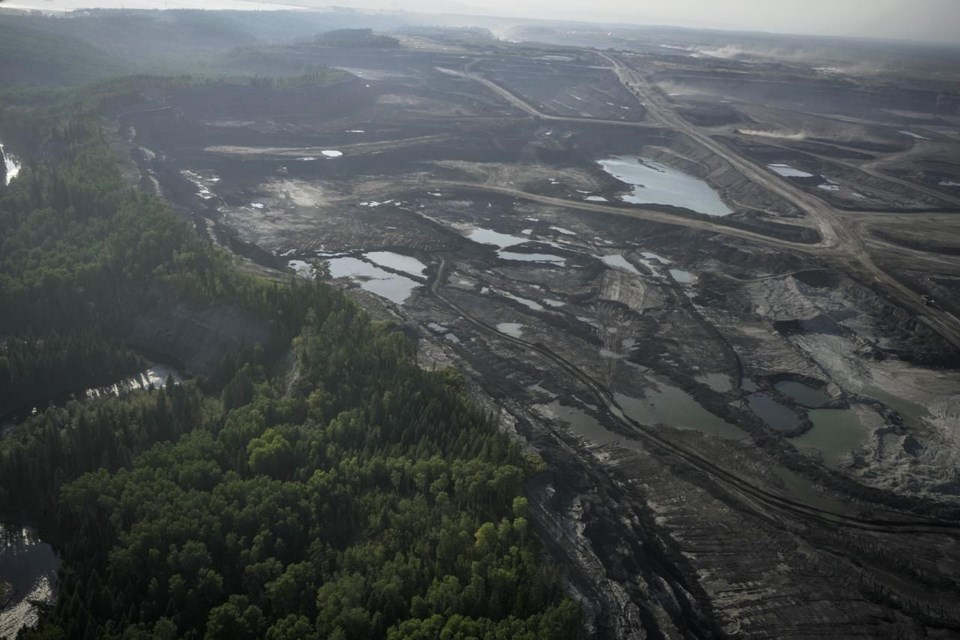FORT MCMURRAY, Canada (AP) — During a May wildfire that scorched a vast swath of spruce and pine forest in northwestern Canada, Julia Cardinal lost a riverside cabin that was many things to her: retirement project, gift from from her husband, and somewhere to live by nature, as her family had done for generations.
“That was our dream home,” said Cardinal, a member of the Athabasca Chipewyan First Nation. “It’s like a displacement.”
Thousands of wildfires in Canada this year have incinerated an area larger than Florida, releasing into the atmosphere more than three times the amount of carbon dioxide that is produced by Canada in an entire year. And some are still burning.
Canadian leaders, including liberal Prime Minister Justin Trudeau, have long insisted the country can exploit its natural resources while protecting biodiversity and leading the global fight against climate change. But the seemingly endless fire season is putting a spotlight on two aspects of Canada that increasingly feel at odds: the country’s commitment to fighting climate change and its status as one of the world's top oil and gas producers — fuels that when used release carbon dioxide, a greenhouse gas that traps heat in the atmosphere and intensifies the dry conditions for wildfires to swallow millions of acres.
“They’re portraying Canada as environmental,” said Jean L’Hommecourt, an environmental advocate belonging to the Fort McKay First Nation. “But the biggest source of the carbon is here.”
OIL FOCUS AND ADVOCACY
Canada is among roughly 100 nations that have pledged by midcentury to reach “zero emissions,” or take as much greenhouse gas out of the atmosphere as it contributes. At last year’s U.N. climate conference, known as COP27, it also joined other rich nations to promise more money for developing countries to fight climate change.
Yet to the same conference, Canada brought the second-largest delegation of fossil fuel executives of any country in the world, an analysis by The Associated Press found. Eleven executives from major Canadian oil, gas, and steel companies, including Enbridge and Parkland Corporation attended COP27 — where countries set climate priorities and timelines for reducing emissions of greenhouse gases. The only country to send a larger delegation of fossil fuel executives was Russia, AP found.
“We’re not there to drive an agenda, but we do have a perspective to offer,” said Pete Sheffield, chief sustainability officer at pipeline and natural gas giant Enbridge Inc., echoing what other Canadian energy executives told The AP about their attendance at COP27.
One such perspective is that Canadian oil producers can keep extracting oil at current rates, and with the help of technology, clean up their own operations so the country can still hit its climate targets. But even if Canada’s oil producers manage to do so, their plans don’t consider the greenhouse gas emissions that result from when customers use their products to power cars, heat homes, take flights, and so forth.
OIL, FIRES AND SMOKE
In the western province of Alberta, where many ferocious wildfires burned, vast deposits of thick crude oil, mixed with tarry sand, sit beneath the forest. Extraction from this area, known as the “oil sands,” uses lots of energy, making Canada’s oil — most of which is extracted here — some of the world’s dirtiest.
In Alberta, the industry’s mark on the landscape is profound: over an area larger than New York City, oil companies have carved chunks of earth into open-pit mines plunging hundreds of feet deep, created lake-sized chemical runoff pools and left otherworldly stacks of neon yellow sulfur byproduct.
On some weeks, the fires in Alberta burned so close that oil companies had to temporarily shut down oil and gas production, and average Canadians couldn’t safely breathe the air.
Still, Canadian producers have no plans to slow down. Since 2009, oil sands extraction has grown. Today, Canada produces about 4.9 million barrels of oil a day, with oil and gas contributing almost a third of the country’s emissions in 2021.
SUSTAINABLE FUTURE?
Part of Canada’s reasoning to produce so much oil and gas in the 21st century is that it’s a stable democracy with stricter environmental and human rights laws than other oil giants that the West has historically relied upon. Canada is the largest foreign supplier of oil to the U.S., exporting an amount equal to 22% of U.S. consumption.
But climate scientists warn that current levels of extraction will mean Canada won’t reach net zero emissions. Never mind the additional contributions to climate change from wildfires along the way, which scientists say will burn more and longer as the planet warms.
Scientists at Climate Action Tracker, a group that scrutinizes nations’ pledges to reduce emissions, label the country’s progress as “highly insufficient,” stressing that Canada needs to implement its climate policies much faster.
The wildfires will add to the challenge of cutting emissions — and pose significant health risks to Canadians and anyone who comes in contact with the smoke.
In June, a fire got close to the subarctic, mostly indigenous hamlet of Fort Chipewyan, in northern Alberta. In the blaze, Julia Cardinal and her husband Happy Cardinal would lose their cabin, about a 45-minute boat ride away.
While the trauma of the fire is still vivid, the couple’s feelings are complicated. In spite of understanding the role of climate change in the fires, and the impact of oil on the climate and lakes and rivers surrounding them, they are not quick to blame the industry. Happy Cardinal was an oil sands worker until retiring three years ago.
“That’s where my money comes from,” he said.
___
AP data journalist Mary Katherine Wildeman contributed to this report.
Suman Naishadham And Victor Caivano, The Associated Press




